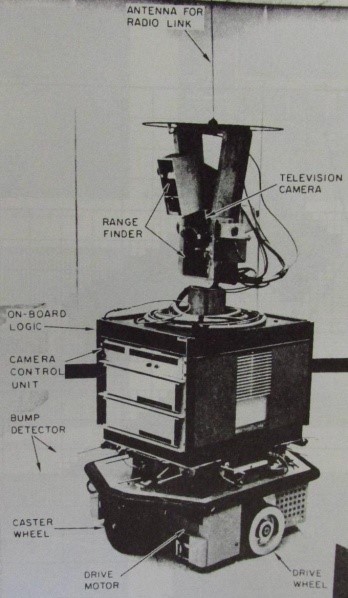Article Source
- Title: Artificial Intelligence 3.0 – Third Wave of AI
- Note: This article was written by Eunika Mercier-Laurent, Chairman of IFIP WG 12.6 Artificial Intelligence for Knowledge Management and Innovation.
Artificial Intelligence 3.0 – Third Wave of AI
Machine Intelligence 3.0
The current state of machine intelligence 3.0. (source: Image courtesy of Shivon Zilis and James Cham, designed by Heidi Skinner).
This year we celebrated 60 years of Artificial Intelligence, although there were many individual discoveries and prototypes conducted before 1956, such as the work of von Berthalanfy, Alan Turing (from 1936), artificial neural networks (Warren McCulloch’s and Walter Pitts 1943), Norbert Wiener’s cybernetics (1948) and many others. We are now in what many call the Third Wave of AI – but what were the earlier stages?
Early Enthusiasm
The initial dream was about building a machine able to act and reason as human, but even more intelligent. Early enthusiasm connected philosophers, sociologists, psychologists and computer science specialists to collaborate and share ideas. The picture below is the first AI machine Perceptron conceived in the late 1950s.

Figure 1 - Perceptron
Industrial applications
The Second Wave saw the development of AI programming languages such as LISP (1956), Prolog, conceived for natural language processing by the Colmeraurer team in Marseille (1970) and Smaltalk Xerox Parc (1970), among others, as part of efforts to build expert systems in medicine (Mycin 1960) and to solve complex industrial problems in process control, knowledge transfer, design, scheduling, logistics, optimization, configuration and more (Rich, Avignon, Mercier).
These advances were was enriched by constraint programming (1985, ECRC) and case-based reasoning. In the early 1990, many researchers, software vendors and AI-based service providers became euphoric about the power of existing AI techniques. Some tried to solve complex industrial problems using just one technology and mostly without applying a suited method; the “soufflé” fell flat, killed by Internet enthusiasm.
The feedback from all these applications is relatively unknown and little shared. Among the most spectacular results, we saw advances in process control for blast furnaces and racing cars, security for Olympic Games, design, scheduling, planning, resource allocation and more.
As researchers have continued to work in their respective fields while extending to new ones, AI techniques have been embedded in industrial applications, becoming invisible and yet more powerful.
Robots, Data and deep learning
As robotics continued to develop, the miniaturisation and increasing power of computers in all forms, along with progress in natural communications with “machines” all contributed to improving robotic capabilities. Medical and industrial robots are now fully integrated in health care and in 4P Factory systems, while also developing as toys or companions.
Internet and Web 2.0 services (without AI) have become major contributors to an exponential explosion of data. A lack of knowledge around data storage and reuse, and advertising-based business models have led to traditional statistical analysis methods being extended to artificial neural networks and other AI techniques. “Knowledge” discovery from ubiquitous multimedia data has raised interest in deep learning, an approach that has been made possible by the increasing power of computers. It is too bad that the new enthusiasts seem demonstrate little interest in learning from the experiences of the previous two waves of AI…
The current evolution of AI disciplines and techniques is depicted in Figure 2.

Figure 2 – Current and evolving AI disciplines and techniques (Kayakutlu, Mercier-Laurent, 2016)
All digital, connected and open technologies raise issues of security and cyber security. A useful combination of AI approaches and techniques is likely to be the subject of further experimentation in coming years. One example might be the use of AI-based tutoring and immersive systems, along with game technology to enhance education and training.
AI offers considerable benefits for all fields involving the acquisition of knowledge with its ability to integrate feedback to deepen and enhance the experience. This could lead to the creation of symbiotic human-machine relationships rather than replacing humans with machines.
AI @ IFIP
IFIP has long been involved in the AI space. All Working Groups within TC 12 are devoted to various aspects of AI applications, such as:
- Knowledge Representation and Reasoning
- Machine Learning and Data Mining
- Intelligent Agents
- Semantic Web
- Artificial Intelligence Applications
- AI for Knowledge Management & Innovation
- Social Networking Semantics and Collective Intelligence
- Intelligent Bioinformatics and Biomedical Systems
- Computational Intelligence
For more information about AI work taking place within IFIP, visit http://ifiptc12.org
